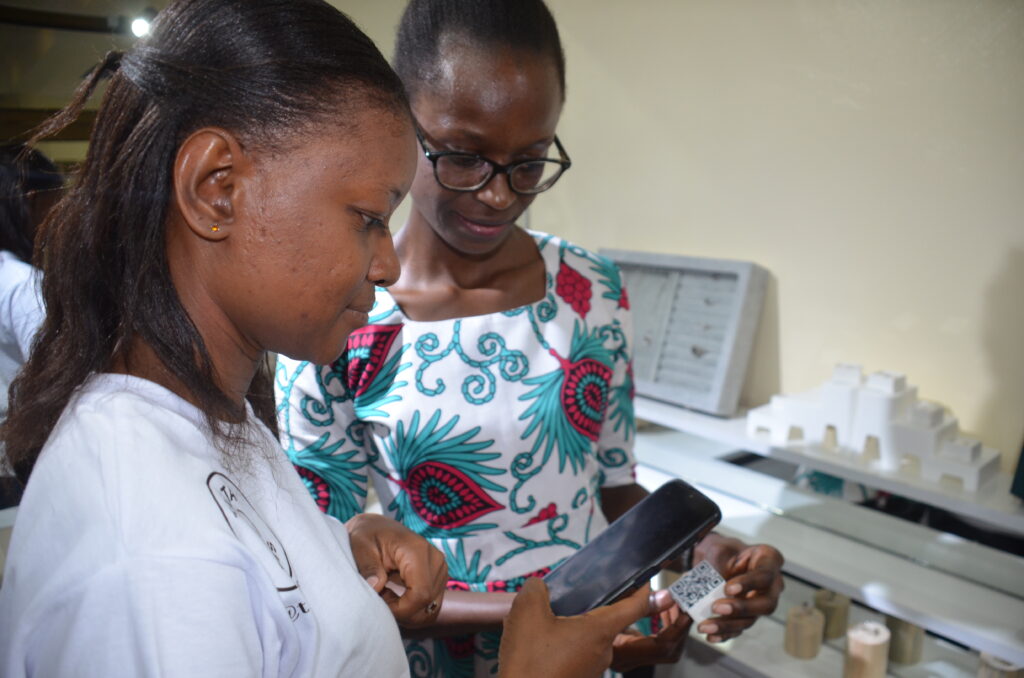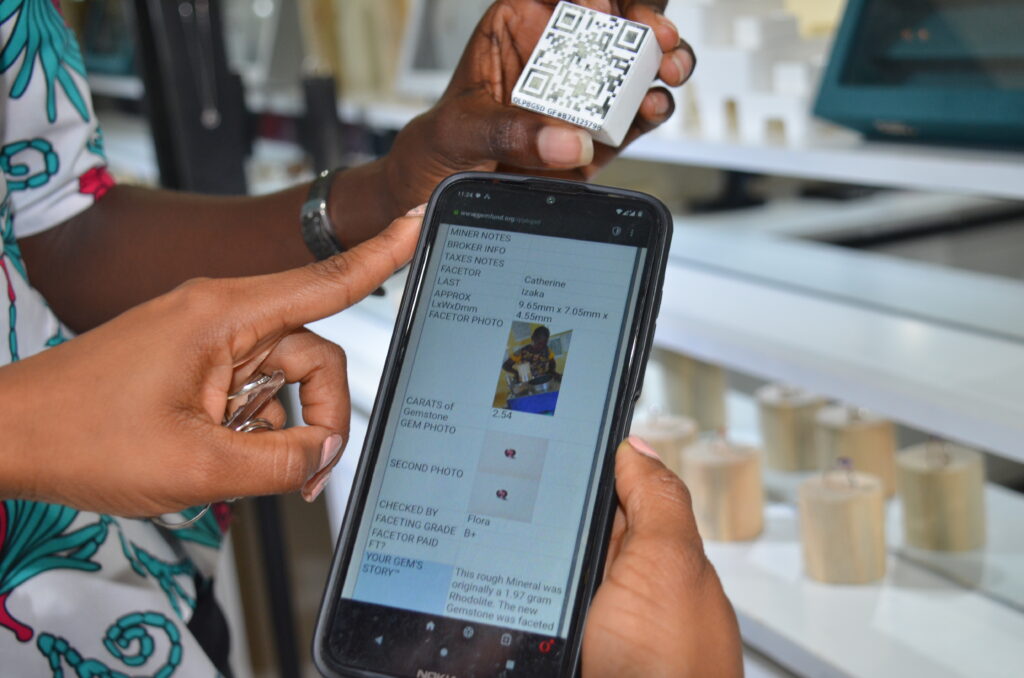Blockchain
At the heart of a well-lit booth at the Voi Gemstone, Value Addition and Marketing Center in Taita-Taveta County, a row of expertly cut gemstones placed carefully on top of tiny white boxes along a beautifully decorated wall speaks of class and sophistication.
These are rhodolites and red garnets displayed for sale to both local and international buyers who visit the iconic facility.
Each semi-precious stone has a fascinating history detailing a long journey from the bowels of mines in the rural villages of Bura in Mwatate to the glass shelves of the marketing booth at the Gemology Center.
However, this unique narrative is embedded deep into the heart of every stone through a complex, but secure Non-Fungible Token (NFT) blockchain technology that gives every cut piece a unique digital identifier whose data can neither be altered, nor erased or even corrupted by any actor in the value-addition chain.
“Each stone on our display has a narrative stored in a blockchain network. It protects the unique identity for our artisanal miners’ stones and supports traceability for that product anywhere in the world,” explains Irene Walowe of Teita Gems at the Voi Gemstone Center.

Irene Walowe (l) using a phone to scan a QR Code on a gembox to access the history of a cut rhodolite as captured in the blockchain database.
The deployment of blockchain NFT technology to enhance security of the gem market and protect the unique identities for precious and semiprecious stones mined by women artisanal miners in the remote villages in Taita-Taveta County is a major milestone in the new frontier of utilization of digital assets in Kenya’s mining sector.
This technology is being viewed as the most practical approach in promoting gemstone brand identities and domesticating the traceability factor in war against wanton gemstone smuggling. Once a gemstone is digitally mapped and all the relevant information captured in the NFT blockchain network, the details can never be altered or changed by the final consumer; be it a buyer or a jeweler.
This technology by GEMFUND, an organization that supports artisanal women miners, is being piloted in Mwatate, where several women mining groups are having their gemstones digitally secured. The organization has entered into partnership with Teita Gems to promote the market for digitally secured gemstones mined and value-added by artisanal miners.
James Biss, the founder, says the blockchain used for mapping the gemstones employs the Traceability and Transparency Technology (T3) model. This system addresses the challenges of widespread smuggling of precious stones and has even introduced special platforms for giving micro-royalties through M-Pesa for individuals involved in the value-addition process.
He discloses that this technology, developed by a team in Nairobi, will be rolled out across the country within the next one year, where youths and actors especially women in Artisanal and Small-Scale mining sector will be trained on value addition and integration of T3 factor in locally mined gemstones.
He also predicts that once refined, the T3 model will be a highly sought-after technology to handle most challenges bedeviling the gemstone sector. “This is a Kenyan initiative and invention that was born here but will be raised everywhere. We will spread this technology to miners across Kenya and elsewhere.
Gems on the T3 network are slowly appearing in Kenyan shops and will be worldwide very soon,” he said. Biss explains that when traceability and transparency variables are addressed, several other related issues like labor practices and fair payments will be addressed.

The unique details of the gemstone captured in the secure database.
He points out that through curbing smuggling and increasing transparency in reporting on gemstones, this technology can be a formidable asset in driving the country’s target of having mining contribute 10 percent to Kenya’s Gross Domestic Product.
Over the years, gemstone trade has been adversely affected by the proliferation of smuggled precious stones in the global market. There have also been concerns over human-rights violations in the mining sector including child labor and exploitation of miners.
This has spawned a class of conscientious buyers’ keen to the history of precious stones in the market. These ‘buyers of conscience’ are often driven by fears that their purchases are indirectly supporting illegalities like smuggling, promoting exploitation of artisanal miners or encouraging labor malpractices like use of children in the mineral extraction process. This technology helps in addressing such concerns.
In the international gem market, the technology is also being seen as a panacea for multiple challenges including brand theft and misappropriation of gemstone identity. The smuggled minerals have often ended in prestigious global exhibitions without giving credit to the source countries.
“This technology is introducing honesty and transparency in the gemstone sector,” he says. This transparency is indicated in the comprehensive data captured for each cut gemstone that includes the mineral type, size, weight, color, shape and location.
Other details are the facetor, the facetor’s photo, the gem checker, the faceting grade, authorized store, broker details, information on taxes, contact information, the weight before and after faceting, and even whether fair payment was made to the miner.
Margaret Zigodi, 71, the chairperson of Rise and Shine, a women miners’ Community Based Organization (CBO) in Bura, Mwatate is amongst the miners who have acquired skills on cutting, faceting and keying in data for the T3 network. The CBO, one of the local groups benefiting from the T3 technology, has had 15 women miners graduate from value addition training at the Taasisi ya Madini at Mwanjira Youth Polytechnic in Mwatate.
“We have embraced value addition because it pays more. As miners, we have also been trained on cutting and capturing the information of our stones to make sure they are not mistaken for stones from other regions,” she says. Zigodi explains that although the group’s current mine is not yielding high-quality gemstones, they buy gemstones from other miners for value addition.
She appealed to the government to allocate the CBO a mining zone inside Tsavo National Park once artisanal miners’ zone delineation exercise is completed. The chairperson also called for introduction of gemstone cutting and value addition courses at the polytechnic to capacity build the local women miners.
“With the lapidary equipment, the government should introduce value-addition courses and post a trainer to teach women on how to improve whatever we mine here,” she says.